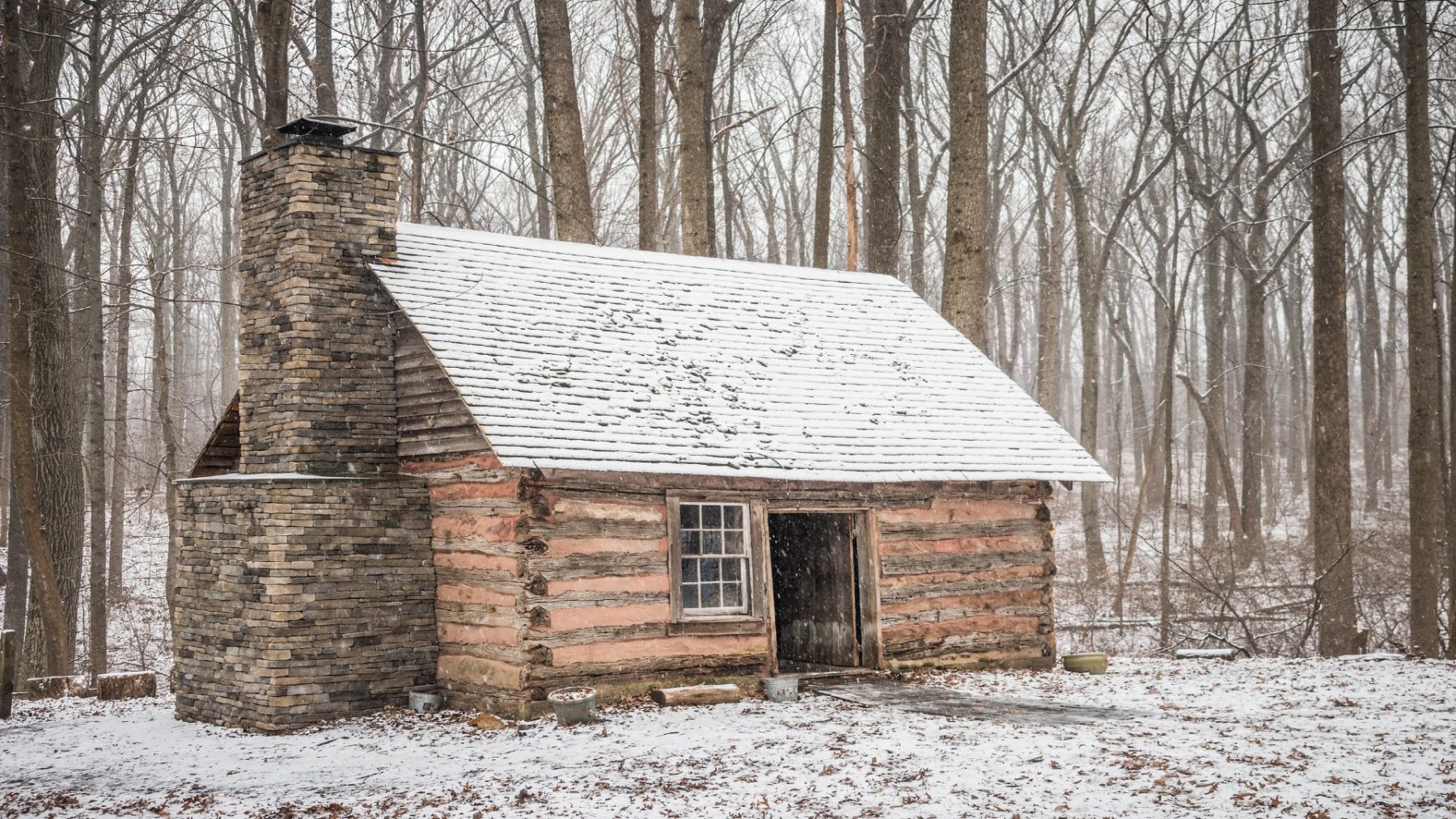The Thomas Harper Cabin
After the Civil War, African Americans, comprising over a third of the Montgomery County population, lived in more than 40 settlements throughout the county. The Harper cabin came from a post-Civil War African American community, north of Poolesville, in western Montgomery County. The Harper family built it in 1870 in the community of Jonesville.
The property remained in the Harper family until 1935 when it was sold to Harry L. Willard, who rented it to tenants. His heirs donated the cabin to Montgomery County Department of Parks in 1976. The cabin was dismantled, moved, and reassembled at Brookside Nature Center as part of the US Bicentennial celebration. During reconstruction, the chimney, flooring, windows, and other aging parts of the original house were replaced.
The cabin looked very different when the Harpers lived here. It had a rear addition, was covered by clapboards which hid the logs, and was white- washed inside and outside. Behind the cabin were a hen house, smokehouse, hog pen, vegetable garden, privy, and orchard with apple, peach, plum, and crabapple trees. The cabin had no electricity or indoor plumbing.
This cabin has one room downstairs and one room upstairs. The downstairs room served multiple purposes: kitchen, dining, sitting room, washroom and family room for work and gathering. The chimney is made of sturdy, large creek stones, but in Jonesville it was made of smaller stones and bricks.
The space between the logs was chinked with stones and mud mixed with hog hair and glue made from boiling down hooves. Though most of the cabin is now chinked with cement for ease of maintenance, a few spots have authentic chinking between the logs. Often, holes were made in the chinking in the summer to allow breezes to blow through, and then refilled in the fall.
The Harper Family
After the emancipation of Maryland’s enslaved population in 1864, Alfred Harper is listed as a resident of Montgomery County, MD in the 1870 and 1900 census reports. Alfred and his wife, Sallie Jones had two sons, John Thomas Harper and George Columbus Harper. John Thomas Harper was married twice: Elizabeth Galloway and Sarah Beal. Thomas (born around 1835) and Elizabeth (1848) Harper raised six children in the cabin: Thomas Jr., Richard, Mary, Ida, Annie, and Julia. Later, their son Richard and his wife Rachel raised fifteen children there, seven of whom are listed in the 1900 census: John, Elizabeth, William, Stanley, Genevieve, Ashley, and Arnold.
Jonesville
Slavery ended in Maryland on November 1, 1864. Jonesville is typical of several dozen family-based communities formed by freed slaves in Montgomery County after the Civil War. Unlike freed black settlements in other states, Jonesville was on land actually owned by the residents. After the Civil War, Erasmus Jones and his brother Richard purchased 18 acres in Montgomery County. This land formed the core of what would become Jonesville, a community of fifteen families along a road between Jerusalem Road and Cattail Road. The residents of the community were mainly relatives of the Jones brothers.
Everyday Life in a Cabin
Imagine raising ten children in a house this small! It sounds hard, but there are some important things to remember about life in those days. All the children would not have been living in the house at once. By the time the youngest was born, the oldest two or three were out on their own. No children expected to have a room of their own or many toys. They grew up in a close knit family and community where faith, hope, and charity were the foundation of life.
There was no running water in the house. Water needed for drinking, cooking, cleaning and bathing had to be hauled from a spring about 200 feet away. This spring was probably covered by a little stone house, and food that needed to be kept cool was placed in or near the running water. A pit toilet (outhouse) was located on a part of the property furthest away from the spring. Since there was no electricity in the house, light came from kerosene lamps or candles. Cooking was done over a wood or coal stove that also provided heat in the winter.
In the original home the upstairs area was frame instead of log and it was two rooms. One room was for the parents and the infants. The other bedroom was for the children.
Everyone helped with chores, which included chopping wood, gardening, feeding the chickens and hogs, collecting eggs, cooking and baking, sweeping the floors, washing and mending clothes, washing dishes, and hauling water. In springtime, the family needed to till and plant the garden. In the fall, they had to harvest, put up food for the winter, and slaughter the hogs.
The Smokehouse
The smokehouse was an important part of a homestead. Since there was no refrigeration, meat quickly spoiled if it wasn’t preserved through either smoking or salting. Meat was hung from the rafters and a smoky fire was built inside the windowless smokehouse. After days of smoking, the preserved meat lasted for months. This 1850’s smokehouse was originally from Derwood, MD. It was reconstructed at Brookside Nature Center in 1975.
